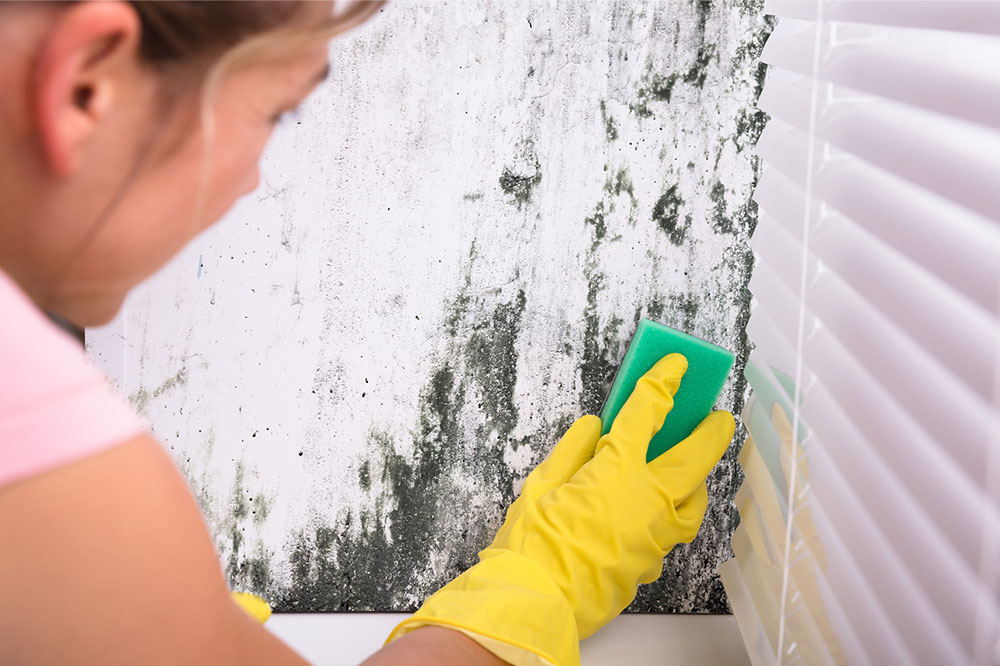Household products and factors that can lead to lung damage

Household products can help ensure the space remains clean or make the house more aesthetically appealing. However, some things, be it decor like carpets or products like humidifiers, can do more harm than good. In fact, alongside things like water damage, poor materials, and accumulation of fine dust, some everyday household products are known to cause lung damage. Over time, one can face several complications, such as allergic reactions, headaches, and even respiratory issues.
5 household products and factors that lead to lung damage
Carpets
Carpets, irrespective of size and color, help add some warmth to a room. But, sometimes these decor pieces can act as a breeding ground for pollutants and potential allergens, such as dust, dirt, pet dander, lead, dust mites, and cockroach allergens. Furthermore, toxic gases can settle into these carpets, which may become airborne during activities like walking, running, and even vacuuming. These carpets can also contain certain chemicals in the form of adhesives and carpet pads, which can be incredibly harmful to lung health. So, one of the best ways to steer clear of this lung-damaging household product is to alternatively use rugs or stick to hard flooring, especially in damp areas of the house like kitchens, bathrooms, and entryways.
Mold
While one can keep the house sparkling clean, some areas such as laundry rooms, crawl spaces, washrooms, and attics are prone to dampness. This creates the perfect environment to promote the growth of mold, bacteria, viruses, cockroaches, and dust mites. Moreover, when one is exposed to mold, it can trigger asthma symptoms and allergic reactions. Some of the other signs that indicate worsening lung health are nasal congestion, wheezing, coughing, rhinitis, and sneezing. Besides this, it has been found that some people can have an increased risk of health issues originating from damp areas in the home. These include young children, seniors, and people with cystic fibrosis or immunosuppression.
Some ways suggested by the United States Environmental Protection Agency to counter the issue are:
Drying clothes outdoors
Opening windows post hot water showers
Regularly checking the house plumbing for possible leaks, extra moisture, and damage
Humidifier
Typically, one may use humidifiers in the winter or extreme weather conditions that lead to dry air. While this may seem harmless, inhalation of humidifier disinfectants has been associated with lung damage.
Over and above this, in the case of young children with respiratory infections, humidifiers can make matters worse by worsening allergies and asthma symptoms. So it’s considered best to steer clear of this product. But alternatively, one can try a few tips, such as using dish soaps and water to clean the humidifier every 2-3 days. Plus, one must ensure the filters of the product are cleaned at least once a week.
Hair straightener
Most people know that straightening one’s hair comes at the cost of exposing it to strong chemicals. This includes utilizing hair styling beauty products, such as hair straighteners which use heat to remove all traces of moisture from the strands of hair. The heat exposure causes common issues, such as breakage, frizziness, dryness, hair fall, dullness, and split ends.
However, the damage does not stop there. When trying to straighten hair, one must use specific products for the best results. When these products come in contact with the heat from the hair straightener, they release formaldehyde gas, which can cause asthma, lung irritation, and more health issues. Alternatively, one can try other chemical and heat-free methods to get straight hair. Some of these methods are blowdrying with cool air and hair wrapping.
Candles and incense products
Most people use scented candles and incense sticks for their calming aroma. However, when utilized, they can cause health issues such as allergic reactions and lung irritation.
This happens due to the release of smoke, soot, and VOCs (volatile organic compounds) into the air, which can worsen lung conditions. Therefore, to prevent such health problems, one can switch to soy or beeswax candles and low-emission incense products to keep the home smelling good at all times. Another way to have the house smell nice without using candles or incense is by utilizing essential oils.
In addition to the above-mentioned common household factors contributing to lung damage, one must be wary of the damage caused by insecticides, pesticides, cleaning products, air fresheners, and high-VOC paints and solvents. This way, one can prevent damage to the organ and its associated diseases.



